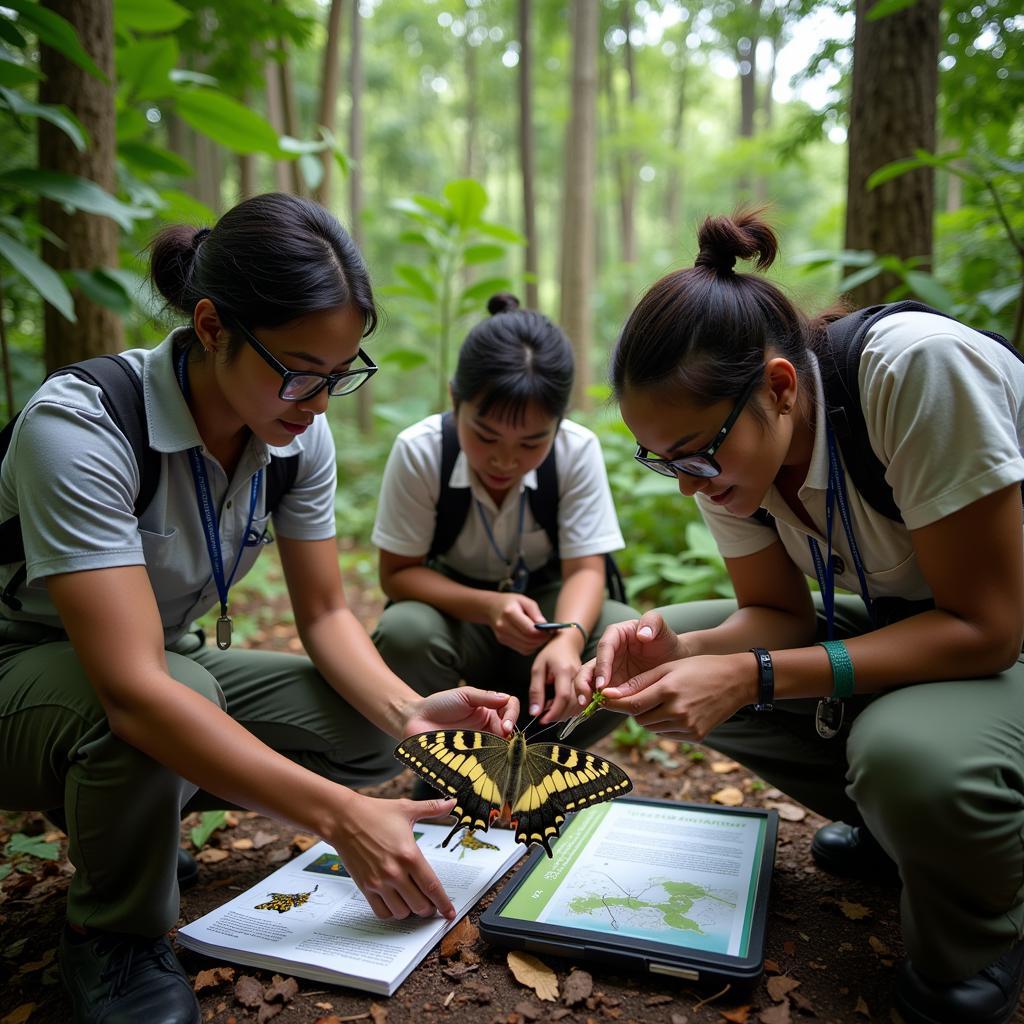The Majestic African Giant Swallowtail Butterfly
The African Giant Swallowtail Butterfly, scientifically known as Papilio antimachus, is a creature of breathtaking beauty and fascinating biology. With its striking orange and black markings and impressive wingspan, it commands attention. This article explores the captivating world of this remarkable insect, delving into its habitat, life cycle, and the challenges it faces in the modern world.
Unveiling the Giant: Size and Appearance
The African giant swallowtail holds the title of the largest butterfly in Africa, boasting a wingspan that can reach an astonishing 25 centimeters. Its vibrant orange wings are adorned with bold black stripes and markings, creating a distinctive pattern that makes it easily recognizable. The hindwings possess elongated tails, a characteristic feature of swallowtail butterflies. The females are generally larger than the males, further emphasizing the impressive size of this species. This majestic butterfly truly lives up to its name, captivating observers with its sheer scale and vibrant colors.
Habitat and Distribution of the African Giant Swallowtail
The African giant swallowtail is primarily found in the rainforests of central and western Africa, spanning countries such as Angola, Cameroon, the Democratic Republic of Congo, Ghana, Ivory Coast, Liberia, Sierra Leone, and Uganda. They prefer dense forest habitats, often near rivers and streams, where they can find suitable host plants for their larvae. These areas provide the ideal environment for the butterflies to thrive, with ample food sources and suitable breeding grounds.
The Life Cycle of Papilio antimachus
The life cycle of the African giant swallowtail, like all butterflies, consists of four stages: egg, larva (caterpillar), pupa (chrysalis), and adult. The female butterfly lays her eggs on specific host plants, primarily belonging to the Strophanthus genus. These plants contain cardiac glycosides, which are toxic to many animals, but the Papilio antimachus caterpillars have evolved a tolerance to these toxins. They even sequester the toxins within their bodies, making them unpalatable to predators. This unique adaptation provides them with a significant defense mechanism throughout their larval stage. The pupa stage can last several weeks, and finally, the magnificent adult butterfly emerges, ready to continue the cycle.
Threats and Conservation
Despite its size and striking appearance, the African giant swallowtail faces several threats, including habitat loss due to deforestation and the illegal pet trade. As rainforests are cleared for agriculture and logging, the butterfly’s habitat shrinks, impacting its population. Moreover, the demand for exotic butterflies in the pet trade poses a significant risk, as collectors may capture and trade these magnificent creatures illegally. Conservation efforts are crucial to ensure the long-term survival of this iconic African species.
 Conservation Efforts for the African Giant Swallowtail Butterfly
Conservation Efforts for the African Giant Swallowtail Butterfly
What Makes the African Giant Swallowtail Unique?
The sheer size of the African giant swallowtail sets it apart. Its striking orange and black wing pattern is also unique. The toxins it sequesters from its host plants provide a powerful defense against predators. These factors combined make Papilio antimachus a truly remarkable insect.
Dr. Imani Olajuwon’s Insights
Dr. Imani Olajuwon, a renowned entomologist specializing in African butterfly species, explains, “The Papilio antimachus is a testament to the incredible biodiversity of African rainforests. Its size and coloration are truly awe-inspiring.”
Further Observations from the Field
Dr. Olajuwon adds, “Understanding the ecological role of this magnificent butterfly is crucial for its conservation. Further research is essential to understand the complexities of its life cycle and the impact of habitat loss on its populations.”
Conclusion
The African giant swallowtail butterfly, Papilio antimachus, stands as a symbol of the incredible biodiversity found within Africa’s rainforests. Understanding and protecting this magnificent species is vital for preserving the rich tapestry of life on our planet. By raising awareness and supporting conservation efforts, we can help ensure that future generations can marvel at the beauty of the African giant swallowtail.
FAQ
- What is the wingspan of the African giant swallowtail butterfly? It can reach up to 25 centimeters.
- Where is the African giant swallowtail butterfly found? It inhabits the rainforests of central and western Africa.
- What does the African giant swallowtail butterfly eat? The adults feed on nectar, while the larvae feed on Strophanthus plants.
- Is the African giant swallowtail butterfly poisonous? The larvae sequester toxins from their host plants, making them unpalatable to predators.
- What are the threats to the African giant swallowtail butterfly? Habitat loss and the illegal pet trade are significant threats.
- Why is it important to conserve the African giant swallowtail butterfly? It plays a crucial role in the rainforest ecosystem and is an indicator of its health.
- How can I help conserve the African giant swallowtail butterfly? Support conservation organizations working to protect its habitat.
More questions and resources:
- Explore other African butterfly species on our website.
- Learn about the importance of rainforest conservation.
- Contact us for more information about the African giant swallowtail butterfly.
Need help? Contact us 24/7: Phone: +255768904061, Email: kaka.mag@gmail.com, or visit us at: Mbarali DC Mawindi, Kangaga, Tanzania.

